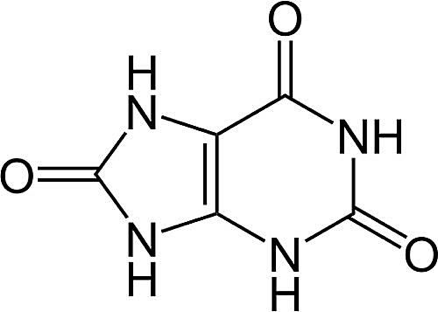Everything You Need To Know About Gout!
What Is Gout?
Gout is a type of arthritis which is severely painful for the patients. It manifests typical inflammatory symptoms such as redness, swelling, sudden pain attacks, and tenderness of joints. The symptoms appear suddenly, which is why it is difficult to be diagnosed earlier. Fortunately, treating the disease is relatively easier as compared to other rheumatic disorders.
 Gout usually begins in the metatarsophalangeal joints. It is usually the big toe joint where the initial symptoms appear suddenly. The patient experiences a continued swelling and redness with recurrent and sudden pain attacks.
Gout usually begins in the metatarsophalangeal joints. It is usually the big toe joint where the initial symptoms appear suddenly. The patient experiences a continued swelling and redness with recurrent and sudden pain attacks.
The prime cause behind this disease is the excess of uric acid, which starts getting deposited between the joints. The situation then continues to get worsened, ultimately leading to permanent gout symptoms. As the problem affects the bones, that is why it has been classified as one of the types of arthritis (which means inflammation of bones).
Common Affectees of Gout
Although, like other medical disorders, gout cannot be considered an age-limited or gender-specific disease. Nevertheless, studies have shown that it mostly occurs after the age of 50. The problem is more common in men than in women. Moreover, the disease is partially hereditary, i.e., if one or both parents suffer gout, it is likely that the child may also develop the disease over time.
When Does A Person Becomes Prone To Gout?
There are various situations which contribute to rising blood uric acid levels, and subsequently, trigger the onset of gout. Some common factors which put an individual to an increased risk of developing gout.
• Diabetes mellitus
• Obesity
• Kidney disorders/malfunctioning
• Improper/imbalanced diet (taking protein rich foods)
• Excessive intake of alcohol derivatives
• Excessive intake of fructose
These are just the prominent risk factors. There can be many other situations as well which cause elevated uric acid level in the blood, and hence, may lead to gout.
What is uric acid and how does it affect gout?
Unlike most bone disorders which are related to calcium imbalances in one or the other way, gout is associated with excessive deposition of uric acid between the joints. That’s why the disease has an entirely different pathophysiology, and hence, a dissimilar route of treatment.
Uric Acid
Uric acid is a product resulted from metabolism of purines. Purines are present naturally in our body, as well they derived from meaty foods such steak, seafood, organ meat etc. In addition, uric acid may also be derived from alcoholic beverages, or drinks with added sugars (such as fructose).
A quick glimpse of its chemistry
 Knowing a little bit about the chemistry of this substance may help us better understand about its metabolism and related details.
Knowing a little bit about the chemistry of this substance may help us better understand about its metabolism and related details.
Uric acid is formed as a result of breakdown of purine, which crystallizes as monosodium urate. Under normal physiological conditions, uric acid is excreted out of the body via urine. However, in case of any abnormal conditions, uric acid gets precipitated from the blood (as it is a crystalline structure), and is deposited between the joints.
How Does Uric Acid Cause Gout?
As said earlier, the deposition of uric acid precipitates inside the joints is what causes gout. This situation may either be a result of excessive level of uric acid in the blood, or due to metabolic disorders. Kidney disorders may also serve as contributors to excessive blood uric acid levels.
If we go into the deep details about how the disease progresses, the root cause we get at the end is the deposition of urates in the joints, regardless of the lifestyle, diet, and heredity of the patient. It seems whenever the uric acid level rises in the blood, the person becomes actively prone to developing gout.
When does the blood uric acid levels rise?
We know that the function of kidneys is to purify blood from any excess components (not to forget about the harmful ones). Under normal circumstances, a slight increase in blood urates is easily controlled by excreting out the excessive substance through urine. This temporary rise may be attributed to diet imbalances, such as taking high protein diet (meat, seafood, and some vegetables), alcohol, or sugary meals. However, if an individual continues on this improper diet plan, then the situation may result in a permanently high levels of uric acid in the blood. This may also affect the normal kidney function to excrete out most of this substance.
Another situation which may cause a rise in the blood urates is when the kidneys are not functioning properly. The malfunctioning may be a result of any other underlying disorder, such as diabetes, dehydration, high cholesterol, etc. If the kidneys are not working accurately, their potential to filter blood from harmful substances. This in turn affects the overall blood biochemistry, resulting in an excess of sugar level, fats, urates, and other harmful compounds. The situation may get worsened if the patient is not aware of this problem, and does not takes care about having balanced diet.
Besides, any physical trauma or surgery may also cause the situation to occur. An overall imbalance in the blood biochemistry may also lead to high blood urates.
How Does The Rise In Blood Urates Elicit Gout?
Though it is considered a rapid illness, it is not a disease which develops ‘suddenly’ with the rise in blood urates. Nevertheless, when the level of uric acid gets disturbed, particularly when it is elevated, the chances of rapid onset is more common.

As said earlier, the excessive uric acid in the blood tends to get precipitated and deposited in the joints. This deposition in the joints triggers the body’s immune response in the form of an inflammatory reaction, calling in the macrophages (white blood cells). This inflammatory response continues as a chain reaction, drawing in more WBCs, and worsening the inflammation. The excessive protein production at the site lowers the pH, making it favorable for uric acid crystallization. Hence, the situation becomes worst, resulting in unbearably painful gout attacks to the patient.
History of Gout
Gout and hyperuricemia are much inter-related. Thus, their history also evolves from the same point. It is quite an ancient disease, dating back to 2640 BC when it was first noticed. This type of arthritis is certainly one of the initial clinical diseases to become known. The disease was initially identified by the Egyptians in 2640 BC, and was later named as ‘podagra’ by Hippocrates in around 500 BC. The history makes it evident that the imbalance of blood uric acid level is quite an ancient disorder.
There have been several Greek mythologies related to podagra. However, we will primarily focus on the scientific records in the gout history.
What Does Podagra Refers To?
The term ‘podagra’ is a Greek word which means ‘foot trap’. The term was initially named to the growing mass as a result of gout on the joint of big toe, which is a common sign of gout in most cases. However, the similar gout manifestations at other joints of the body were also covered by the same terminology. Hence, podagra is now referred to the swollen part of any joint due to uric acid deposition or gout.
From Podagra to ‘Gout’
For many years, the disease was mainly referred as podagra. Then in 1200 AD, Randolphus of Bocking, a Dominican monk, coined the term ‘gout’ to refer to this disease. It is derived from the Latin word ‘gutta’ which means ‘a drop. A possible explanation to coining this term could be the ‘dropping’ of toxic substance (‘humour’) from the blood to the bones.
In history, gout is considered to be the ‘disease of the rich’ or the ‘disease of the kings’ (as opposed to rheumatism which supposedly was the ‘disease of the poor’). This hypothesis might be linked towards the then identified possible factors of gout, which were meaty diet, excessive alcohol or sugar intake, and ‘venery’, as described the ancient scientist Aulus Cornelius Celsus in 30 AD, all of which indicated to a lavish lifestyle confined to the elites only.
Later on, in 1679, the famous Dutch scientist ‘Antonie van Leeuwenhoek’ explained the appearance of uric acid crystals under the microscope. This triggered further studies on gout that explained various symptoms and details about this problem. In 1848, an English physician Alfred Baring Garrod came up with the main cause of gout which was excessive uric acid in the blood that gets deposited in the tissues and joints of the patient.
For years, gout was believed to be a typical male disease since most of the causes of gout were mainly related to the males. Then, during the reign of Nero, Seneca established the fact that gout can also develop in women. She said, ‘… why need we then be surprised at seeing so many of the female sex afflicted with the gout?’ The modern research on the studies proved her speculation. It is now a fact that the disease can also occur in women (though with a lesser frequency), particularly after menopause.
What Triggers Gout?
It is not an immediate sign of excessive uric acid and urates in the body. It develops gradually, and by the time we are able to diagnose it through gout symptoms (particularly the tophi), the problem is already worsened.
As uric acid is naturally a crystalline product, it tends to get precipitated or deposited. Depending upon the site of the body, blood pH, and other physiological conditions, uric acid excess levels becomes visible in two different forms. We either see an overall swelling of patient’s legs, feet, or any other organ. This is because the urates get deposited beneath the skin as lumps. Though this condition cannot be considered as gout (since gout is typically related to bones and joints), it may trigger the development of gout symptoms. In other words, the excessive formation of urate lumps may stimulate crystalline deposition of this substance in the bones.
The other situation, which directly leads to what is gout, is the initiation of direct crystallization of urates and uric acid in the joints. This situation is more stressful for the patient, since the patient may have no prior warnings about this imbalance of blood chemistry. Consequently, gout develops rapidly and becomes extremely painful for the patient.
Other Reasons Triggering Gout
• Alcohol: Alcoholic beverages such as liquor, beer, etc., increases the level of uric acid in the blood, stimulating gout flare. Wine is, however, less associated with gout.
• Diet: Taking protein rich diet, particularly those foods containing high amount of purine, can cause a rapid rise in blood urates. These foods includes meat, organ meat, seafoods (meat again), and some begetables such as spinach.
• Dehydration: Having lower water intake is a major factor contributing to increasing uric acid levels in the blood. This is because dehydration disturbs the overall concentration of substances in the blood, since the kidneys become unable to filter your blood properly. Prolonged dehydration causes increased blood uric acid. And a permanent rise in blood urates triggers gout. (Not to forget the many other ailments associated with dehydration besides gout.)
• High sugar intake: Having a sugar-rich diet, particularly fructose containing meals, also contribute greatly in triggering gout flare.
• Physical trauma: any sort of surgeries, or trauma can also lead to developing gout symptoms, since most of these conditions cause a rise in uric acid levels.
• Medicines: some medicines, particularly diuretics, beta blockers, cyclosporine, even aspirin can trigger gout onset. Hence patients suffering from chronic heart diseases, or high blood pressure are prone to developing gout.

